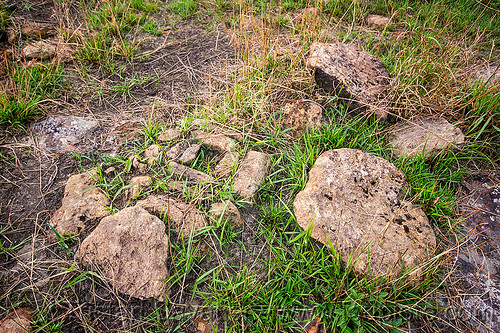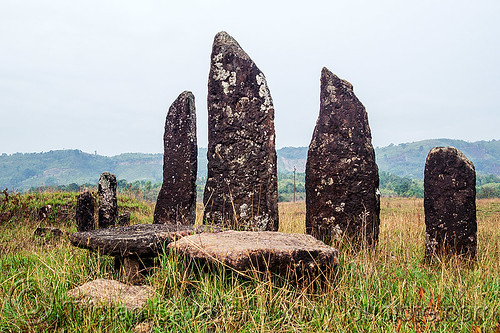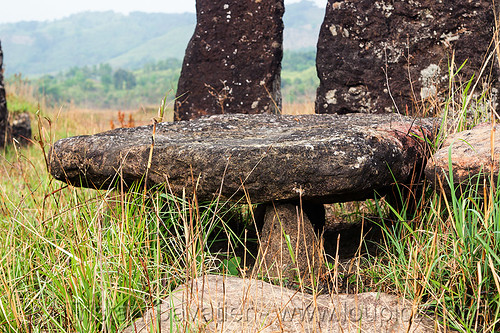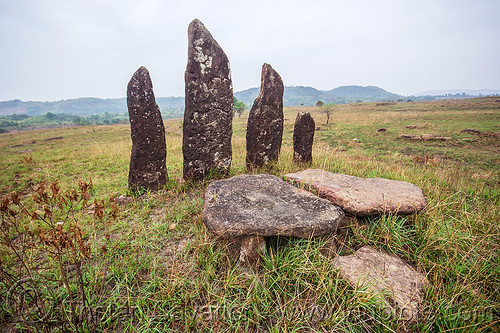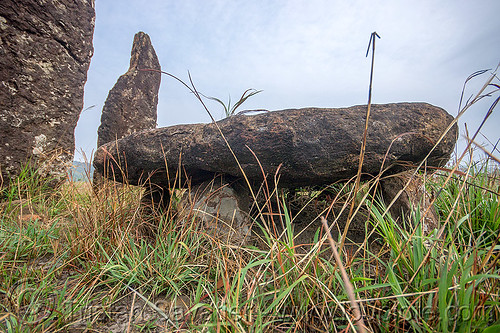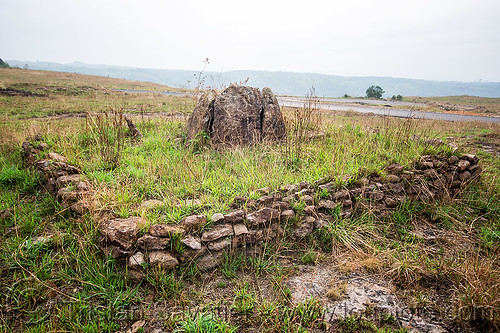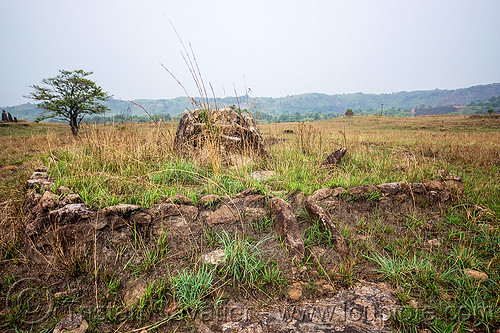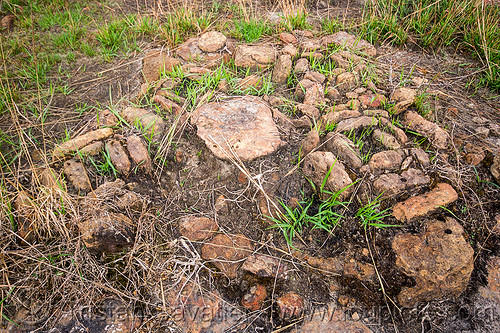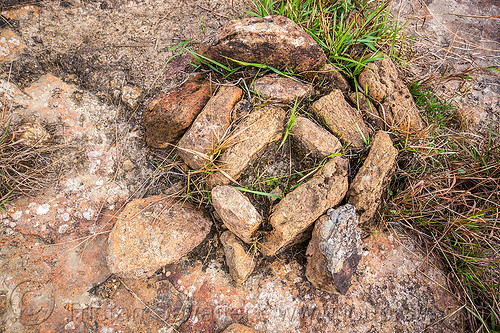khasi megaliths - memorial stones (india) - 10 photos
Khasi Memorial Stones (India)
The East Khasi Hills region of Meghalaya has a very large number of Memorial Stones set-up by the Khasi people.
The Khasi people were following their ancient Tribal traditions until a couple hundreds years ago, with Colonization and their conversion to Christianity. So this abandoned burial site that I noticed on the side of the road is probably not more than a few hundred years old. On the satellite photos, the area around those stones look like the traces of a village that was burned-out.
There are many similar abandoned burial sites with Monoliths all over the region. A few of them that have particularly high Menhirs are protected by a fence.
Those megaliths are not tombstones or graves but rather they are memorial monuments (Cenotaphs), raised in honor of the spirits of the Tribe elders.
The Standing Stones (also called Menhirs or Monoliths) are for male spirits, while the Table-Stones (also called Dolmens) are for female spirits.
I also noticed a large number of small square stone structures (about 20-30 cm side for the center hole).
From reading various old books about the Khasi people ancient funeral traditions, I believe that those square structures are small burial chamber, i.e. small boxes where the ashes of the dead were kept, temporarily before a big ceremony (that did not take place too often) where they were moved into a larger Cinerarium holding the remains of all the Tribe's elders. I believe that this is a cinerarium (or large burial chamber), i.e. basically a communal tomb.
There is not a lot of information about the Khasi monoliths and memorial stones. Here are some books that I found:
- The People, the Megaliths of Cherrapunjee by Sukanya Sharma
- The Megalithic Culture of the Khasis by David Roy
- Encyclopædia of Religion and Ethics: Hymms-Liberty
edited by James Hastings, John Alexander Selbie, Louis Herbert Gray
By Philip Richard Thornhagh Gurdon
- bWomen and Indigenous Religions
edited by Sylvia Marcos
